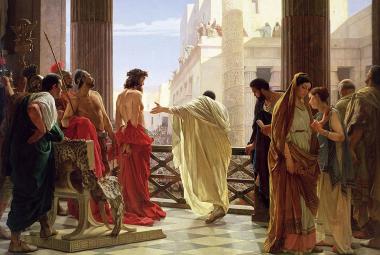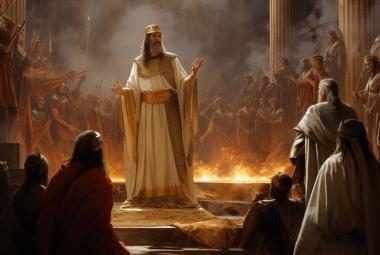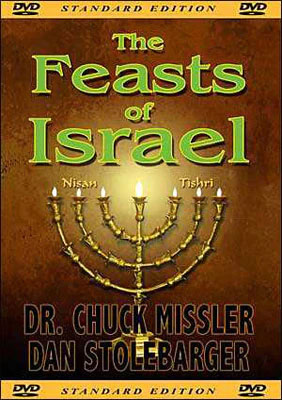Each of the Feasts of Moses, in addition to being commemorative, is also prophetic. The Feast of Pentecost proves to be prophetic of the Church.
On May 14th at sundown (which is also the sixth of Sivan) our Jewish friends will celebrate Hag Ha Shavuot—the Feast of Weeks—also known as Hag Ha Katzir, the Feast of Harvest, and known to most of us as the Feast of Pentecost. This is the fourth of the seven Feasts of Moses.1
The previous feast, the Feast of Firstfruits, is to be celebrated on “the morrow after Shabbat” after the Feast of Unleavened Bread—that is, on the Sunday which we would call Easter Sunday.2 The Jews were then to begin “counting the omer” for seven weeks—49 days—and the following day was to be celebrated as the Feast of Weeks. This 50th day led to the Greek label “Pentecost,” which simply means “fifty.” (The mysterious hidden intervals of 49 letters in each of the books of the Torah also seems to be linked to this passage in Leviticus.3)
It is worthy to note that this feast was also one of three which was compulsory for every able-bodied male to attend in Jerusalem.4 It is a festive occasion and the Book of Ruth is traditionally read at this time.
This feast is also the focus of a number of historical traditions from Israel’s history. It is regarded as commemorative of the giving of the Torah at Mt. Sinai.5 There is also a tradition that the death of David occurred on the sixth of Sivan. There is also a tradition that Enoch was born on the sixth of Sivan, and that he also was translated on this day.6
Prophetic Implications
Each of the Feasts of Moses, in addition to being commemorative, is also prophetic.7 The first three are associated with the First Coming of Jesus Christ. The last three, with His Second Coming. The remaining feast, in between, proves to be prophetic of the Church.8
It is interesting that this appears to have been fulfilled with the “birth” of the Church on the very day the Feast of Pentecost was being celebrated in Acts Chapter 2.
The Book of Ruth
It also is interesting that the Book of Ruth, which is so closely associated with the Feast of Weeks, is also the key prophetic book of the Old Testament that portrays the goel, Boaz, in the role of the Kinsman-Redeemer, redeeming the land to Naomi, and taking a Gentile Bride, etc. It is the book of the Old Testament most closely associated with the Church and its uniqueness.9
(I don’t believe one can really understand Revelation Chapter 5 unless one has really studied the book of Ruth.)
It is also provocative to realize that the Feast of Pentecost is the only feast which uses leavened bread. Leaven is a type, or Levitical symbol, for sin. This is consistent with the prophetic profile of the church, which Jesus gives us in His Seven Letters to Seven Churches!10
The Enoch Tradition
The traditional association of this holiday with Enoch is also provocative. There were three groups of people involved with Noah’s flood: those that perished in the flood; those that were preserved through the flood; and those that were removed before the flood. Is there some significance to the notion that he was translated (“raptured”) on his birthday—both on the sixth of Sivan?
The earliest prophecy uttered by a prophet was one by Enoch—before the Flood—and it was about the Second Coming of Jesus Christ!11 Are there aspects of this feast yet to be fulfilled?
These observations simply scratch the surface. Be sure to review the background and implications of all of the feasts in our Briefing Package, The Feasts of Israel.
Notes:
- Lev 23:15-22; Num 28-29; Deut 16. See also our briefing Package The Feasts of Israel, page 42.
- Lev 23:11.
- The peculiar properties of the text are explored in our briefing package, Beyond Coincidence.
- Deut 16:16.
- The third day of the third month would be 46 days after the 18th of Nisan. Moses was to prepare for the third day (the 49th). Exodus 19.
- His translation is referred to in Genesis 5:24. We haven’t been able to determine the basis of the 6th of Sivan traditions.
- Rom 15:4, Col 2:16.17, etc.
- Fulfillment: John 14:25,26; Acts 1:8; 2:1-47.
- See our briefing package, The Romance of Redemption.
- Revelation chapters 2 & 3. See also our briefing package, Letters to Seven Churches.
- Jude 14, 15.







